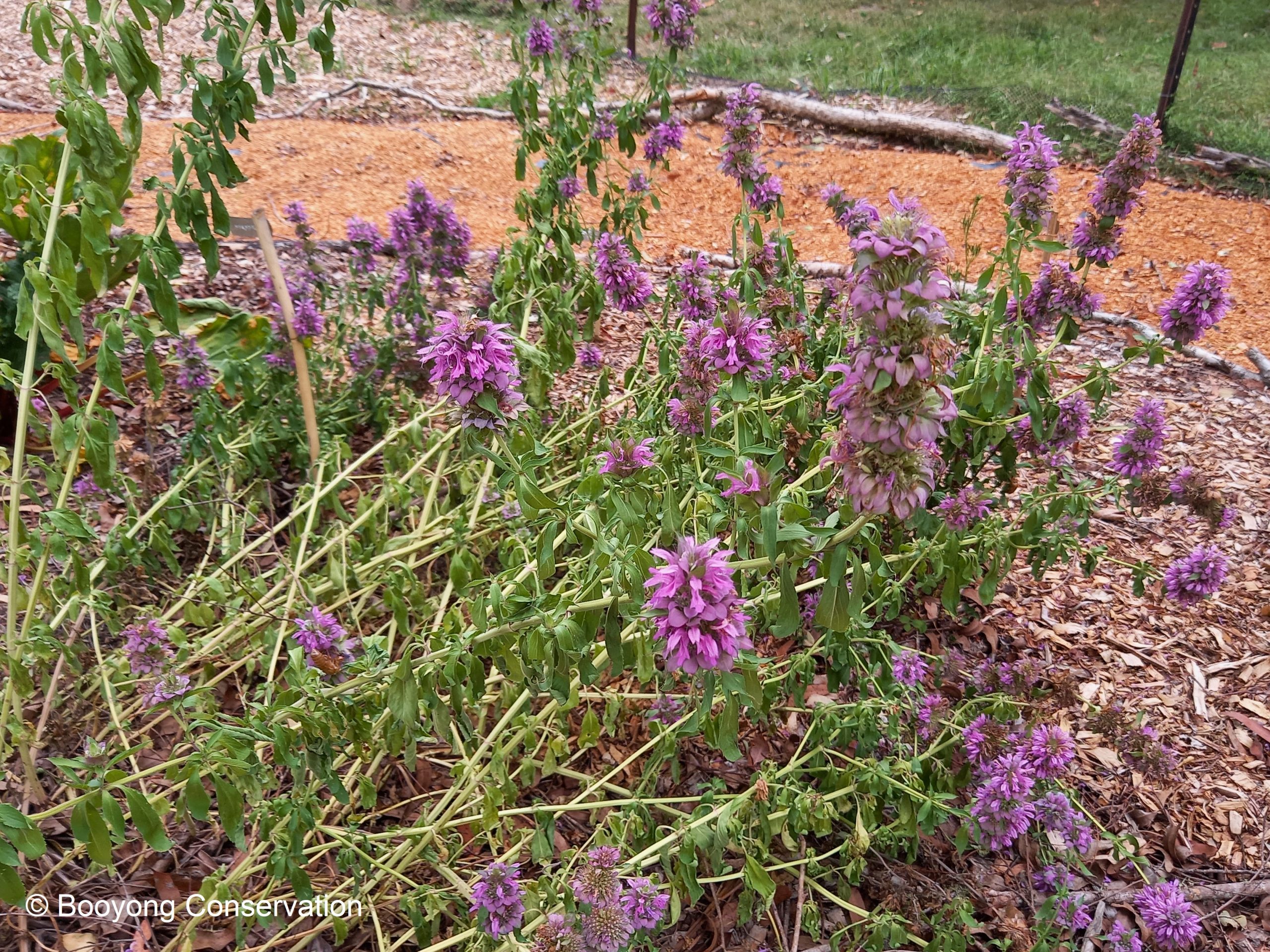Bergamot – Lemon Mint (Monarda citriodora) – This herb alluded us until recently, we thought it may be a mint but just weren’t sure. I even took it to the local nursery and shared it on a Facebook gardening site to try and identify it correctly, to no avail. Until I came across it whilst looking at seeds to purchase for late Summer and there it was, so happy.
Another common name for Bergamot Lemon mint is “Lemon Bee Balm”. It’s a perennial herb that grows up to a metre tall and the lavender coloured flowers are stunning.
Growing – in well drained, rich soil in a sunny or semi shaded position.
Care – Add mulch in Spring to avoid the plant drying out and water deeply in Summer.
Pruning – Divide the plant every two – three years if crowded and cut back vigorously when flowering has ended. Dead head flowers to encourage more growth.
Companion Planting – A great bee and butterfly attractor to the garden.
Pests and Diseases – Susceptible to snails, slugs and powdery mildew in wet and humid weather.
Harvest – Harvest young shoots as required after 120 days
Propagation – Raise seedlings in Spring 3mm apart, covering finely with soil and you can expect germination in 7-14 days. Once established space 30cm and grow in part of full sun in moist, well drained soil. You can also take a piece from the root in Spring or Autumn or grow from a cutting in Summer. Just place it in a glass of water on the bench until roots form.
Health Benefits – Leaves can apparently be infused in oil to make a hair conditioner; the fragrance would be lovely. Leaves could also be added to a warm bath or added to candles or crushed in facial steam to rejuvenate and cleanse the skin.
Recent guests also popped them in a vase on the kitchen bench and the aroma filled the room beautifully. The leaves would make a lovely potpourri.
Lemon Bergamot leaves contain citronellol, which is an effective insect repellent when rubbed on the skin (avoid sunlight as it can attract the sun).
Eating – These lemon scented leaves are commonly used to flavour poultry and fish dishes and taste like a combination of lemon, pepper and thyme. They can also be used raw in salads and flowers are also edible and can be used as a garnish.
Fresh (6 leaves) or dried (one teaspoon) leaves can be used for a refreshing cup of herbal tea and is said to aid in relieving stress, anxiety or depression. You can also blend with black tea or other varieties to mimic an Earl grey blend. We love drying and mixing different tea varieties at Booyong, it’s so much fun.
Don’t ingest if pregnant and be sure to identify correctly before harvesting.

You must be logged in to post a comment.